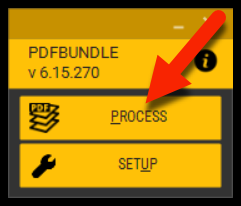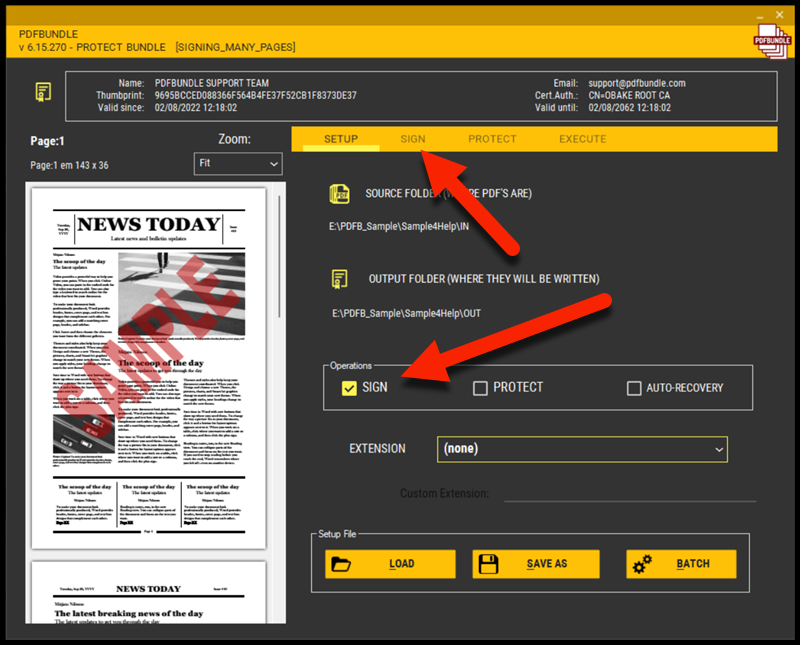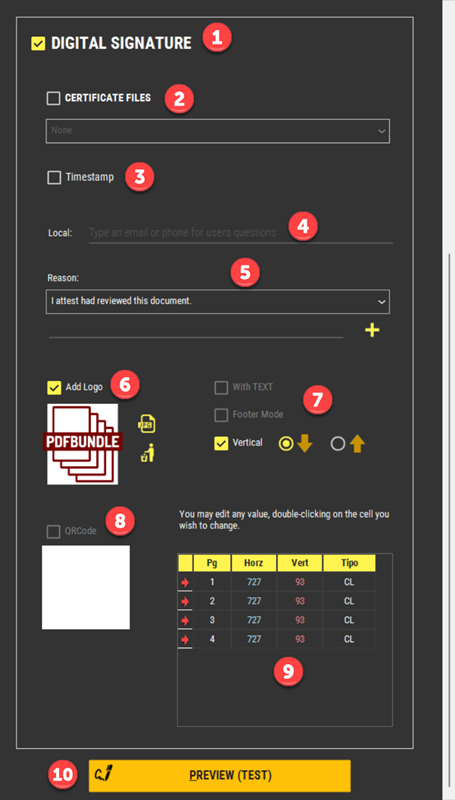|
Click on the PROCESS button. |
|
Check the SIGN box to access all documents signing options in the top menu bar. |
Once you had selected "SIGN" in the menubar, scroll down the sidebar until you see the image below:
|
|
1.DIGITAL SIGNATURE: you must select this option to sign any document, even if it is an invisible signature.
2.CERTIFICATE FILES: when you certificate a file, you can get some restrictions to that document, as follows:
a.Allow Comments, Forms, Signing fields: it will allow posterior OCR, fields, comments, other Signatures, etc. This is the most relaxed mode. Warning: OCR information can be erased in this mode. Perform a PREVIEW before proceed and check if OCR is still valid.
b.Allow Forms Fill-In and Digital Signatures: it will allow posterior OCR, fields and other Signatures. Warning: OCR information can be erased in this mode. Perform a PREVIEW before proceed and check if OCR is still valid.
c.No Changes Allowed: use this option to prohibit any modification in files after signing; otherwise, the signature will be invalidated. Warning: OCR information can be erased in this mode. Perform a PREVIEW before proceed and check if OCR is still valid.
3.TIMESTAMP: using this option, all signatures will be stamped with DATETIME from an official Timestamp server (see SETUP for details). Warning: since this data is taken from external internet servers for each file, the TIMESTAMP strongly downgrades the PDFBUNDLE performance.
4.LOCAL: you can inform any data here. Usually, location data is set here (e.g.: Branch East - New York (NY) - USA).
5.REASON: in general, signatures must reflect what exactly they are evidencing, as an authoring, a review, an agreement, etc. Select the most appropriate reason, or inform a new one typing in the line below, pressing the plus symbol at the end. |


